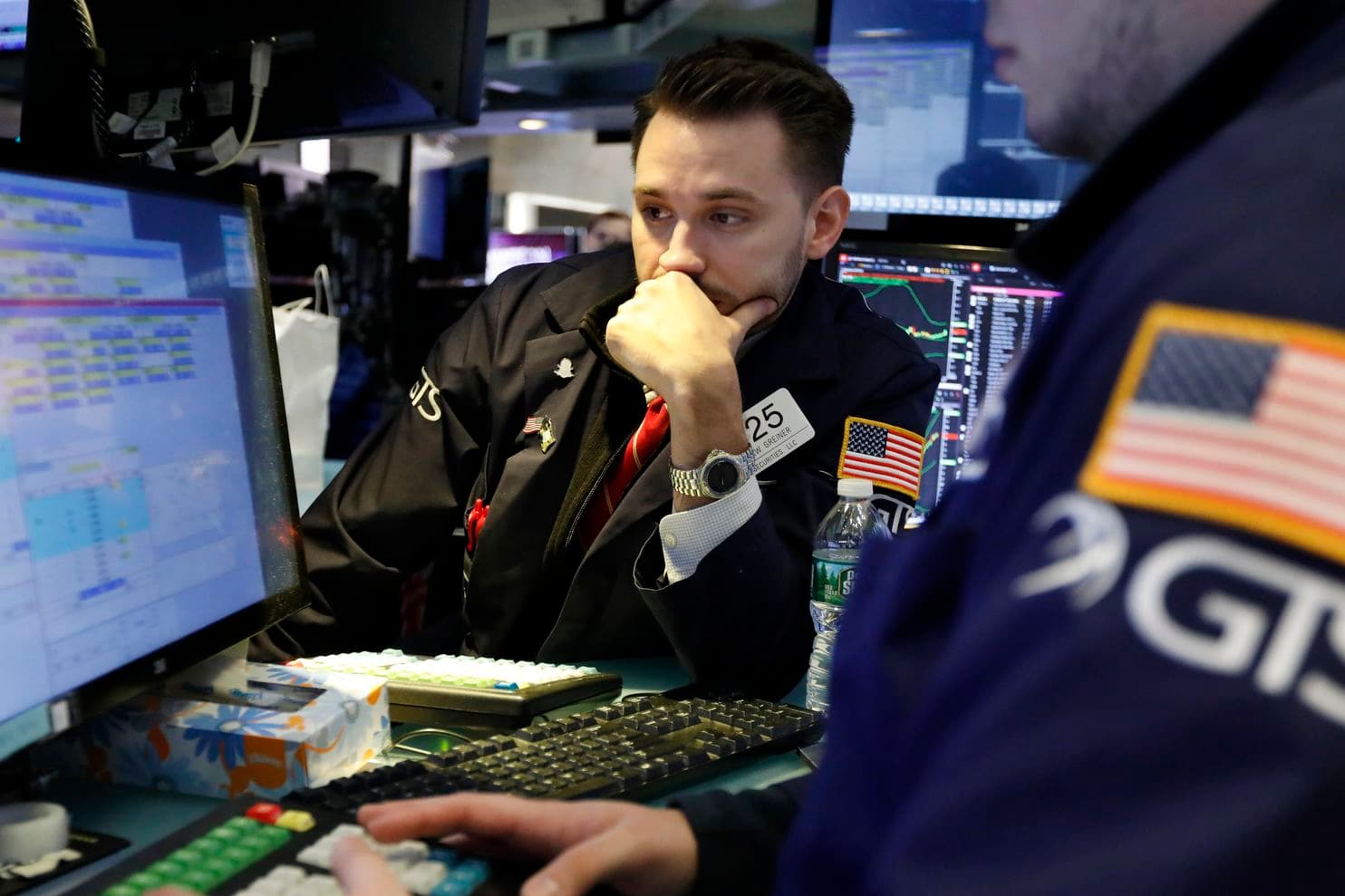
Specialist Matthew Grenier works on the floor of the New York Stock Exchange last month in New York. (Richard Drew/AP)
If you think you understand what’s going on with the global economy, you’re probably not paying attention.
On the one hand, the stock market is powering ahead. Since its recent low on Dec. 24, it was up 22.4 percent, according to the Wilshire 5000 total market index, which measures the value of all publicly traded U.S. stocks. That’s a paper gain of $5.7 trillion. Asian and European stock markets have also rebounded. On the other hand, the “real” economy of jobs and production is slumping in the United States, Europe and China.
How can both be true? Maybe they can’t.
A slowing global economy should weaken the profits of major corporations, which in turn should reduce stock prices. After all, stock values supposedly reflect present and future profits. But stocks are advancing, not retreating. Something, it seems, ought to give. Either the real economy ought to catch up with the stock market, or stocks ought to fall to match the weaker outlook for the real economy.
For the moment, the economy can’t seem to make up its mind. Uneasy about the economy’s strength, many economists have downgraded their forecasts. Just recently, the Federal Reserve suspended interest-rate increases, fearing they might derail the recovery. Meanwhile, stock indexes are trading near historical highs.
Let’s examine some numbers. The Peterson Institute for International Economics, a think tank, makes regular economic forecasts. Here are its latest projections for 2019. Growth in the United States will drop from 2.9 percent in 2018 to 2.2 percent; in the euro zone (the 19 countries in the European Union that use the euro), the decline will be from 1.8 percent to 1.2 percent; and China’s growth will fall to 6.1 percent, lower than its 2018 rate (6.6 percent).
Economist Karen Dynan of Peterson attributes most of the U.S. slowdown to the waning effect of the Trump administration’s 2017 tax cut. Other recent economic indicators signal weakness. A Paychex/IHS survey of small businesses showed a decline in hiring during March after two months of no job growth. Similarly, the Census Bureau reported that orders for durable goods — industrial machinery, oil-drilling equipment, turbines, cars, computers and the like — were flat even after removing a decline of orders for Boeing commercial jets.
One possible explanation of the economy’s slowdown is that the global recovery has benefited from large doses of cheap credit — loans, bonds and other types of debt — and that this torrent of borrowing is now receding. Although the forms of borrowing, whether by governments, businesses or consumers, differ from country to country, a broad credit tightening could undermine the worldwide economic expansion.
“The rise in global debt slowed sharply in 2018,” says a new report from the Institute of International Finance (IIF). In 2017, worldwide debt increased by a staggering $21 trillion, according to the report. Last year, the increase was a much smaller $3.3 trillion. “This slowdown was mainly driven by Europe and China,” the report notes.
But perhaps the global slowdown is only a pause and the buoyant stock market is simply giving fair warning of a stronger economy. Commentators have been complaining for years that stocks are overvalued, and the market has repeatedly brushed these doubts aside.
Corporate profits have been strong, and the market is valuing every dollar of profit at a high “multiple” deserving of a rich stock price. The PE (price-to-earnings ratio) of the Standard & Poor’s 500 stock index has averaged 17 since 1936, according to Howard Silverblatt, a senior analyst at S&P Dow Jones Indices. Now the PE exceeds a lofty 22.
Either the market is mad or it’s gushing with good news.
Read more from Robert Samuelson’s archive.
